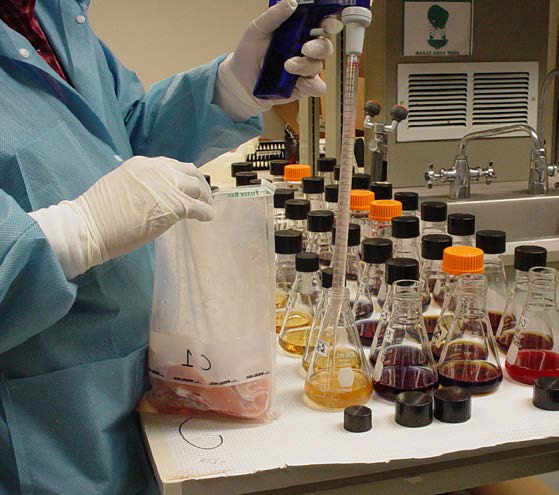 Public health laboratories form the backbone of foodborne outbreak detection and response by detecting clusters of related disease cases that may later be identified as outbreaks. Routine, accurate testing is the only way to definitively identify harmful food contaminants and adulterants.
Public health laboratories form the backbone of foodborne outbreak detection and response by detecting clusters of related disease cases that may later be identified as outbreaks. Routine, accurate testing is the only way to definitively identify harmful food contaminants and adulterants.
Public health laboratories partner with the
Centers for Disease Control and Prevention as members of PulseNet, the national molecular subtyping network. Without PulseNet, many widespread national foodborne disease outbreaks would not be detected. Get the latest information on current foodborne outbreaks on CDC's website.
Illness, Detecting Outbreaks
Public health laboratories conduct foodborne disease surveillance testing for Salmonella, Campylobacter, Shiga Toxin-producing Escherichia coli (STEC), Listeria and other important pathogens. They perform specialized testing on tens of thousands of foodborne disease isolates forwarded annually by commercial and clinical laboratories. Epidemiologists, regulators and policy makers use this information to monitor foodborne disease trends, plan food safety programs, and develop and evaluate food safety policies, among other activities.
Monitoring Our Food Supply
During a foodborne disease outbreak, state agricultural and chemical laboratories often partner with public health departments and federal regulators to test suspected foods to help find the cause of the outbreak. Once the cause is determined, state regulatory partners work with the
US Food and Drug Administration or US Department of Agriculture
Food Safety and Inspection Service to conduct a trace-back investigation to find out which retailer(s) sold the implicated food item, where the retailer purchased it and, eventually, the place where it was produced or grown.
State agricultural and chemical laboratories also perform routine food or animal feed testing to monitor compliance with state and federal regulations. They sample and analyze products ranging from bulk fertilizer and livestock feed to pet food and produce to ensure that the products are free of pathogens, harmful chemicals and/or contain the ingredients listed. Many recalls of agricultural products result from a labeling violation rather than contamination.